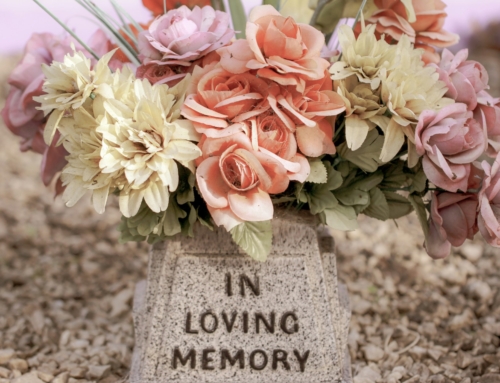Jennifer is a 39-year-old medical doctor who has a successful practice and a loving family. Even though she has had many successes in life, she often doubts that others will accept her and ends up experiencing significant anxiety whenever she is in a social setting.
For example, she arrives at church right before the sermon in order to avoid the awkward time of “meet and greet.” If she has party to attend, she makes sure that she has a glass of wine in order to take the edge off of her nerves. On the other hand, she may avoid the party completely if she can find a reasonable excuse.
What is sometimes even worse than the initial anxiety is that after social interactions, she replays the events over and over in her head, certain that others found what she said to be “stupid” or sounded awkward.
 Jennifer’s anxiety has been a part of her life for years. She endured medical school and residency with extreme distress, often feeling sick to her stomach or using alcohol to numb her feelings. She is tired of just “enduring” life. She wants to feel accepted, but her fear is intense.
Jennifer’s anxiety has been a part of her life for years. She endured medical school and residency with extreme distress, often feeling sick to her stomach or using alcohol to numb her feelings. She is tired of just “enduring” life. She wants to feel accepted, but her fear is intense.
Mikey is a ten-year-old boy who often experiences stomachaches before school. He started playing basketball during this past season but had to quit because the thought of playing in a game and being judged by everyone was too terrifying.
During class, Mikey does not raise is hand and fears being called on for fear that the entire class would laugh at him. His heart pounds when his teacher asks for volunteers and he even starts to feel sick to his stomach.
Mikey’s anxiety is beginning to affect his school functioning, since he is missing more and more class. He is also lonely. Mikey is so fearful that people do not like him that he mostly stays to himself.
The stories of Jennifer and Mikey are examples of people who show signs of social anxiety. Someone who has social anxiety disorder (previously called social phobia) experiences intense fears of being judged and/or humiliated and feels very self-conscious in social situations.
It is estimated that 6.8% of people in the United States are affected by social anxiety disorder (ADAA, 2018). Social anxiety disorder often begins around the age of 13 and affects both men and woman at equal rates (ADAA, 2018).
Social anxiety disorder is not simply a case of “shyness,” but can be very debilitating and cause significant distress. Someone with social anxiety may go out of his or her way to avoid meeting with people or performing tasks that could trigger the anxiety.
The fear of humiliation or rejection is so intense that someone with social anxiety disorder may fail to go to work, school, or a party. He or she may worry for days and weeks before a big event, such as a party, giving a speech, or playing in a sporting event.
 There is a difference between normal anxiety that is a common experience and anxiety associated with social anxiety disorder. For example, it is common for someone to be nervous before giving a speech. However, if an individual is constantly throwing up before the speech or avoiding advancement in work or school because a speech would be involved, then this individual is crossing into the realm of social anxiety. Similarly, it is normal for people to feel a little nervous before meeting new people, but constantly cancelling plans because of anxiety is beyond typical anxious feelings.
There is a difference between normal anxiety that is a common experience and anxiety associated with social anxiety disorder. For example, it is common for someone to be nervous before giving a speech. However, if an individual is constantly throwing up before the speech or avoiding advancement in work or school because a speech would be involved, then this individual is crossing into the realm of social anxiety. Similarly, it is normal for people to feel a little nervous before meeting new people, but constantly cancelling plans because of anxiety is beyond typical anxious feelings.
It should be noted that individuals with social anxiety disorder are not necessarily fearful of every social situation. For example, someone may be very fearful of making conversations with people or giving speeches, but does not experience the same anxiety when dancing in front of others or playing a sport. Each person is unique, and, therefore, may have different anxiety-provoking scenarios.
What is Social Anxiety Disorder?
The Diagnostic and Statistical Manual of Mental Disorders – 5th Edition (DSM-5) defines the specific symptoms of social anxiety disorder (APA, 2013).
These symptoms include:
Intense feelings of anxiety or fear regarding social situations. In these situations, people fear being negatively evaluated by others. This could include such things as fear of how one will talk with others, or giving a speech. In children, the anxiety needs to be present with peers, not only when interacting with adults.
There is a fear that the individual will exhibit anxiety symptoms and then be negatively judged by others for the anxiety, which they fear could then lead to negative consequences such as rejection or embarrassment.
The anxiety is present most times in these situations (either always during a certain situation(s) or all social interactions), as opposed to occasional anxiety.
![]() Due to the anxiety, the situations are either avoided or the individual feels extreme distress during the situation.
Due to the anxiety, the situations are either avoided or the individual feels extreme distress during the situation.
The anxiety is greater in intensity than would be typically expected for a given situation (e.g., always throwing up before school due to anxiety).
Symptoms must be present for at least 6 months in order for the anxiety to be classified as social anxiety disorder, along with the individual experiencing significant distress or impairment in life or functioning (e.g., work, school, relational).
Common Signs of Social Anxiety Disorder
As you might expect, the signs of social anxiety disorder look like most other anxiety disorder symptoms, except that that trigger is in the context of social situations.
***
PIN THIS:

***
Possible signs of social anxiety disorder include (NIMH, 2018, Mayo Clinic, 2019):
- Nausea or other stomach problems
- Hands trembling or physical shaking
- Increase in heart rate
- Feeling as though one’s mind stops working properly (i.e., “going blank”)
- Voice may become softer
- Eye contact is avoided or sporadic, as breaking eye contact helps one regulate the anxiety
- Feeling self-conscious when in social situations and easily embarrassed
- Avoiding social situations because of fear or anxiety
- Children may exhibit significant crying before social situations or fail to speak during the interactions
Causes of Social Anxiety Disorder
The exact cause of social anxiety disorder is not known and is likely multifaceted. What is known is that there is a greater tendency for someone to develop social anxiety disorder if a family member has also been diagnosed with social anxiety (NIMH, 2018).
Other researchers have suggested characteristics of the brain may be involved in the development of social anxiety disorder, such as an overactive amygdala (Mayo Clinic, 2019).
In addition, environmental factors may be involved in the emergence of social anxiety (Mayo Clinic, 2019). For example, someone may have experienced an extremely embarrassing situation that resulted in someone becoming anxious in social settings. Others have suggested that someone may have learned, through modeling, to be anxious in social situations.
Risk Factors:
Although not necessarily causal in nature, there are risk factors that are associated with someone developing social anxiety disorder, such as:
- Genetics (as previously mentioned)
- Negative social experiences, such as bullying, teasing, trauma, or humiliating experiences
- Social skills deficit: Specifically, an individual may misread other’s social cues as more negative or feel discouraged because he or she does not know how to effectively interact with others (NIMH, 2018).
- Personality/temperament: Someone who tends to be more withdrawn or timid may have a greater risk of developing social anxiety (Mayo Clinic, 2019).
- Having an aspect of one’s appearance that draws others’ attention (e.g., facial scarring or stuttering) can lead to increased self-consciousness (Mayo Clinic, 2019).
***
PIN THIS:

***
Strategies for Coping with Social Anxiety Disorder
Techniques that can help someone manage signs of social anxiety include:
1. Self-care
Anxiety (or other emotions) is heightened if tired, hungry, etc. Therefore, maintaining good self-care is essential for optimal emotional functioning.
2. Monitor caffeine intake
Make sure to evaluate your caffeine (or other substance) use to determine if there is a link to anxiety symptoms.
3. Thought challenging
It can be helpful to determine whether your thoughts and reactions are due to the emotion of anxiety or if they are logical. In the case of social anxiety, you can evaluate whether your fear of rejection is based on logic or evidence, or driven by emotions. A therapist can assist you in learning strategies of testing and challenging negative thought patterns.
4. Relaxation
There are a variety of relaxation techniques that you can implement when anxious, such as paced breathing and progressive muscle relaxation. A quick Google search will provide a plethora of breathing exercises.
5. Mindfulness
 The goal of mindfulness is to learn to be aware and present in the moment. This can be very helpful for someone with social anxiety because it can help you learn to control the anxious thoughts and to be fully present in social situations.
The goal of mindfulness is to learn to be aware and present in the moment. This can be very helpful for someone with social anxiety because it can help you learn to control the anxious thoughts and to be fully present in social situations.
6. Meditating and remembering Bible verses
Here are two Bible verses that may be helpful to memorize so you can draw on them when you experience signs of social anxiety:
“So do not fear, for I am with you; do not be dismayed, for I am your God. I will strengthen you and help you; I will uphold you with my righteous right hand.” — Isaiah 41:10
“When I said, “My foot is slipping,” your unfailing love, Lord, supported me. When anxiety was great within me, your consolation brought me joy.” — Psalm 94:18-19
7. Avoid avoidance
Try not to avoid: Although you will feel immediate relief by avoiding social situations, it will only perpetuate the anxiety.
8. Seek help
If you are in distress and need more tools, please seek help today.
[bctt tweet=”8 Ways to Cope with Social Anxiety” via=”no”]
Treatment for Social Anxiety Disorder
Although social anxiety disorder is extremely distressing and can affect all areas of life, there is hope! Effective treatment is available to help you overcome your anxiety. Also, it is important to look for signs of social anxiety in children, such as frequent stomach aches before social situations, as years of suffering may be prevented if early treatment is obtained.
If you or a loved one shows signs of social anxiety disorder, it is important to reach out for a professional evaluation. An initial evaluation with a mental health professional will help you to know if you have social anxiety and what type of treatment may be most effective in helping to alleviate your symptoms.
Furthermore, a medical evaluation will help to rule out any physical causes to anxiety. A psychiatrist may also be recommended to evaluate if medication may be helpful to reduce anxiety.
There are several different types of psychotherapy treatment approaches that may be recommended, depending on your specific situation. For example, Cognitive Behavioral Therapy (CBT) can be used to help you understand anxiety and teach new ways of coping and reacting to anxiety-provoking situations.
If the fear of rejection and humiliation is rooted in prior traumas, Eye Movement Desensitization and Reprocessing (EMDR) may be beneficial for reprocessing the traumas that directly relate to your anxiety.
If social skills are lacking, then a social skills group may be helpful to teach effective relational skills. Your therapist will work with you to decide on the approach that will work best for you. The main truth that you need to know is that you do not need to suffer alone and that help is available! We are here to help — contact a counselor in our online counselor directory today.
Resources
Anxiety and Depression Association of America – www.adaa.org
National Institute of Mental Health – www.nimh.nih.gov
References
American Psychiatric Association (APA). (2013). Diagnostic and statistical manual of mental disorders (5th ed.). Washington, DC: Author.
Anxiety and Depression Association of America (ADAA) (2018). Facts and statistics. https://adaa.org/about-adaa/press-room/facts-statistics. Retrieved on 1/25/19.
Mayo Clinic (2019). Social anxiety disorder (social phobia). https://www.mayoclinic.org/diseases-conditions/social-anxiety-disorder/symptoms-causes/syc-20353561. Retrieved on 1/26/19.
The National Institute of Mental Health (NIMH) (2018). Social Anxiety Disorder: More Than Just Shyness. https://www.nimh.nih.gov/health/publications/social-anxiety-disorder-more-than-just-shyness/index.shtml. Retrieved on 1/25/19.
Photos
“Stay Away,” courtesy of M.T. ElGassier, unsplash.com, CC0 License; “Rose,” courtesy of Cole Keister, unsplash.com, CC0 License; “Shoreline Scripture,” courtesy of Ben White, unsplash.com, CC0 License; “Gather,” courtesy of rawpixel.com, CC0 License










